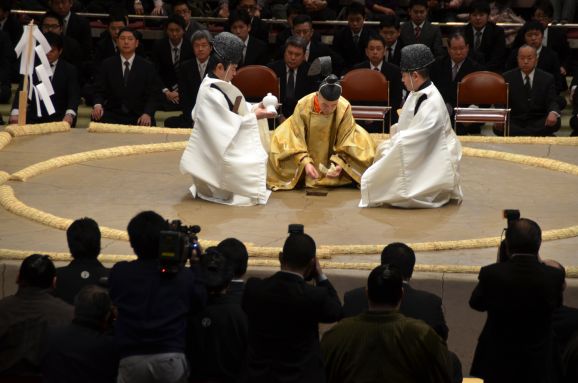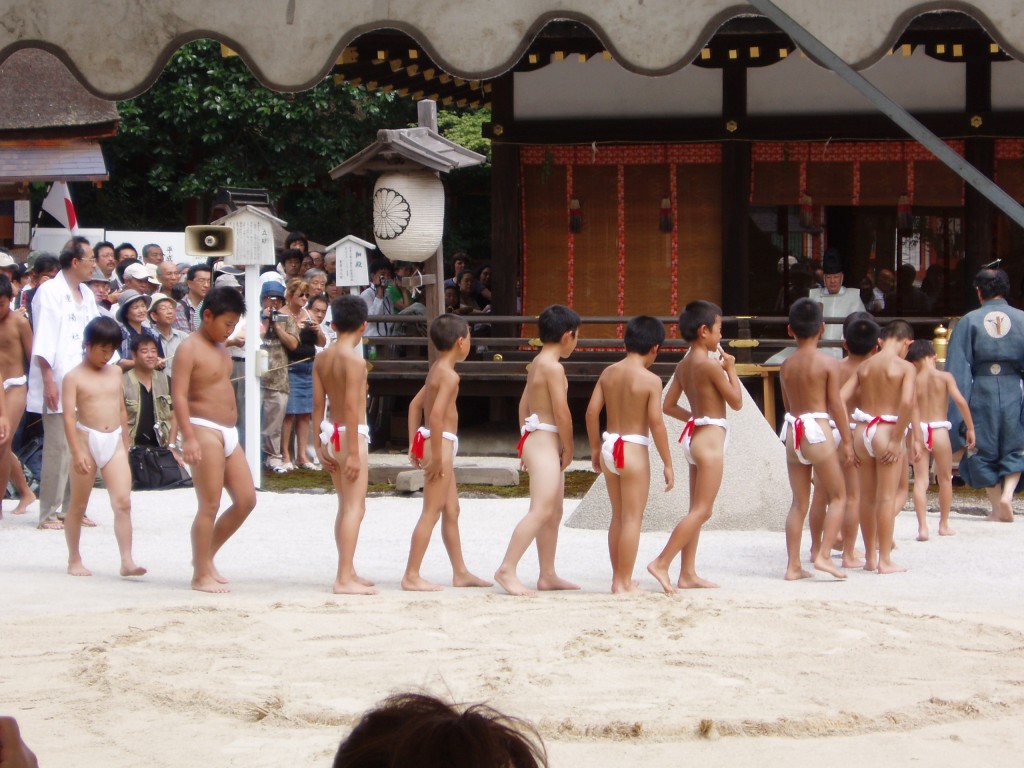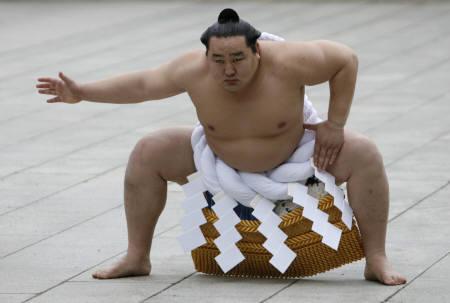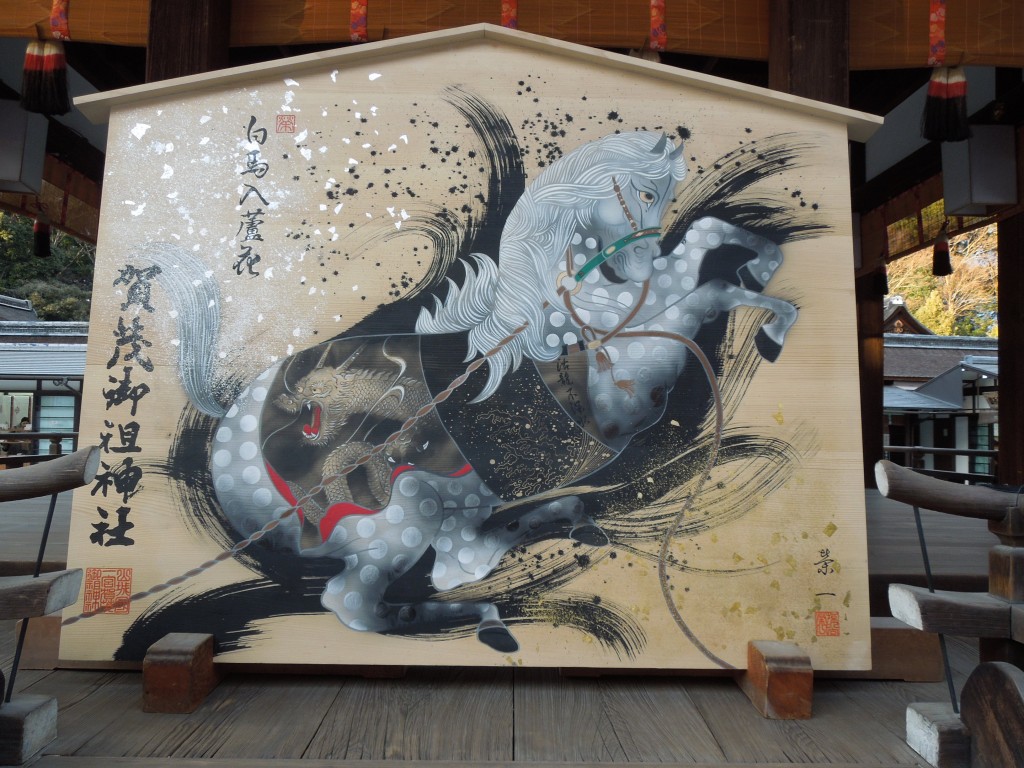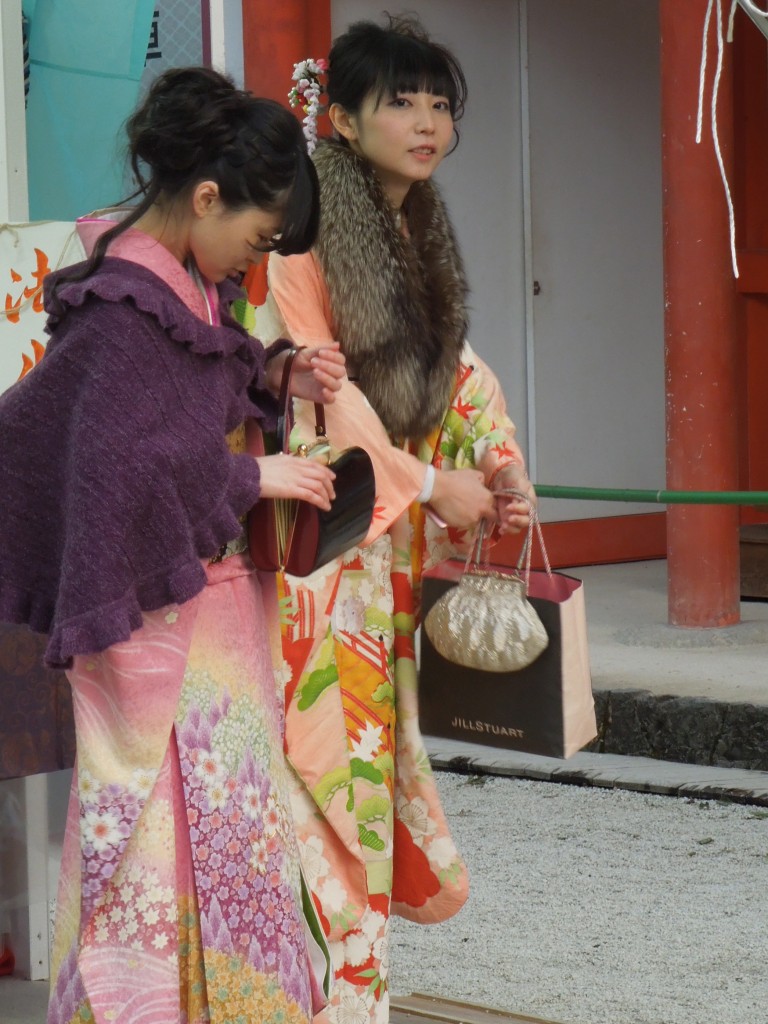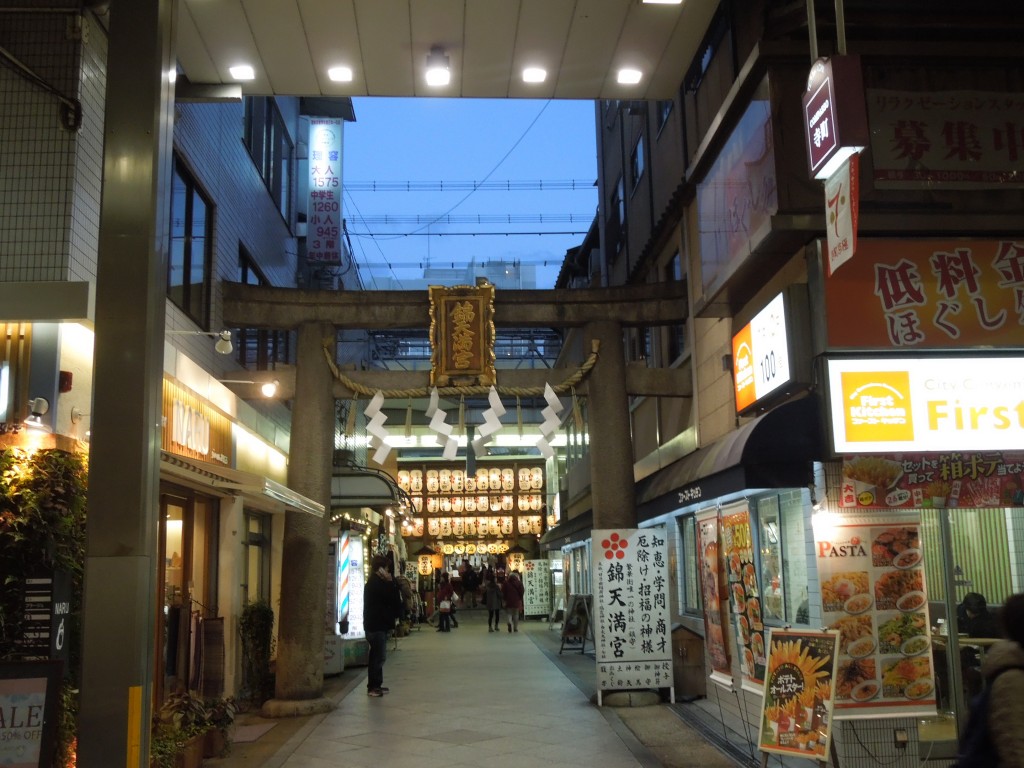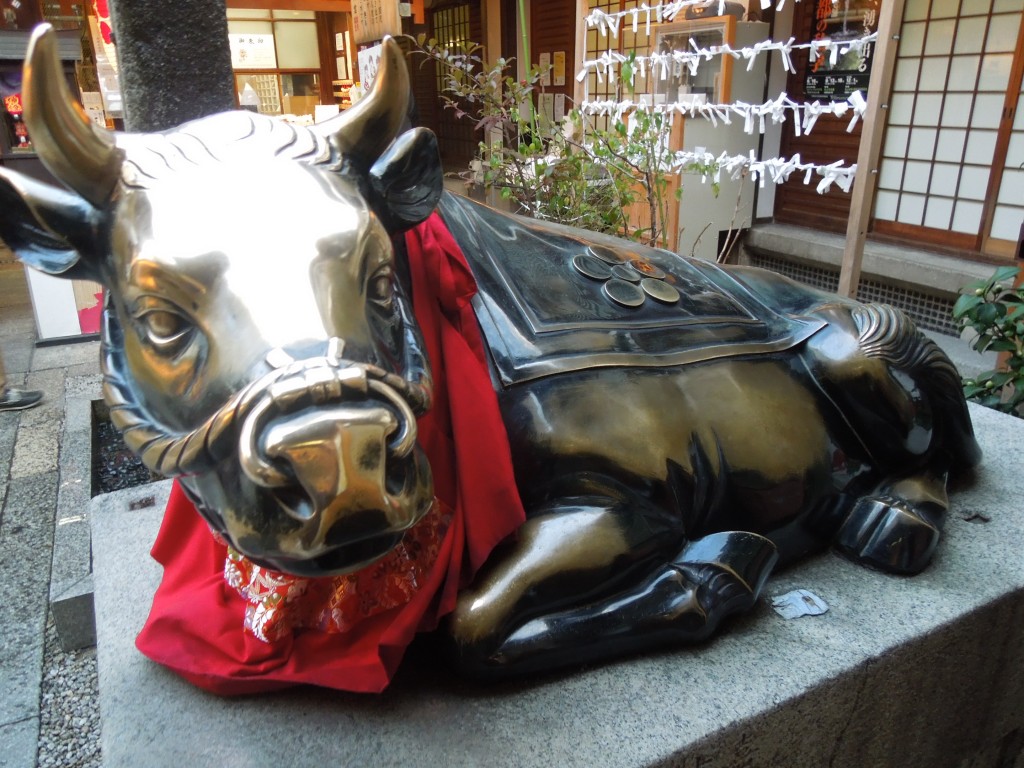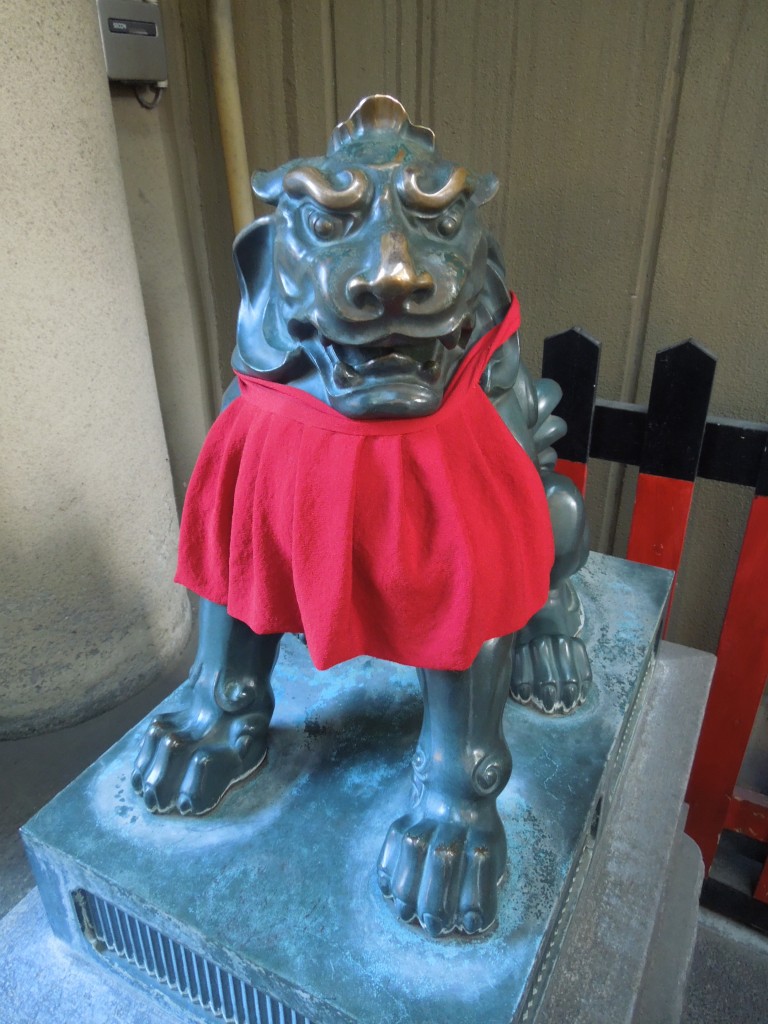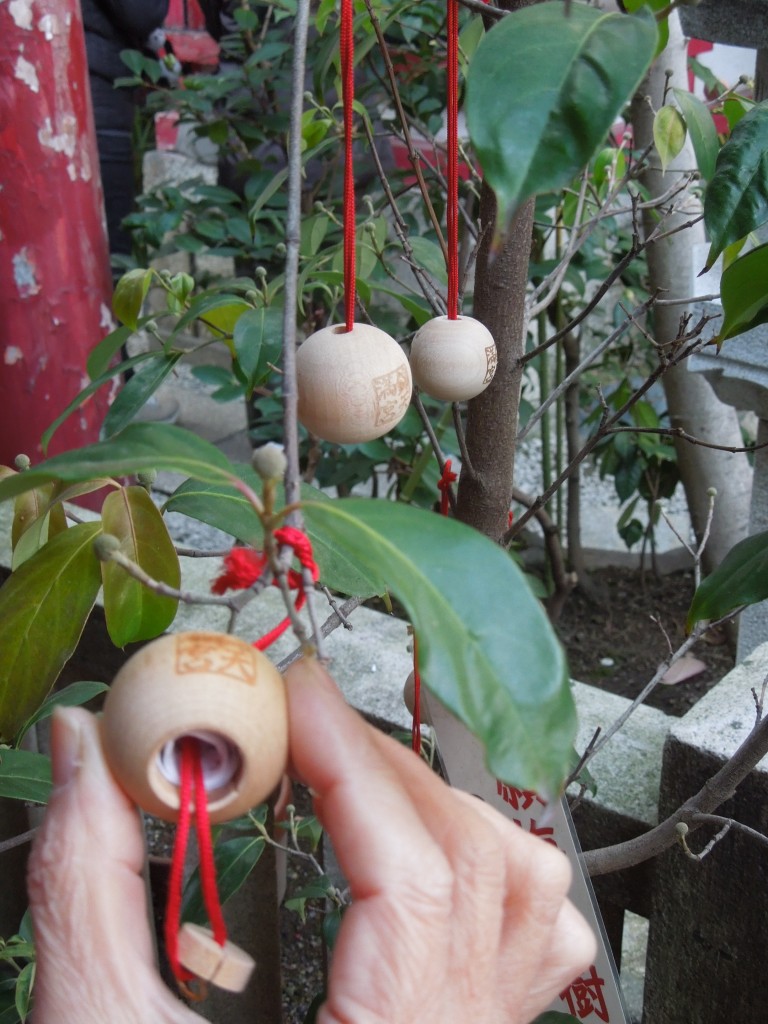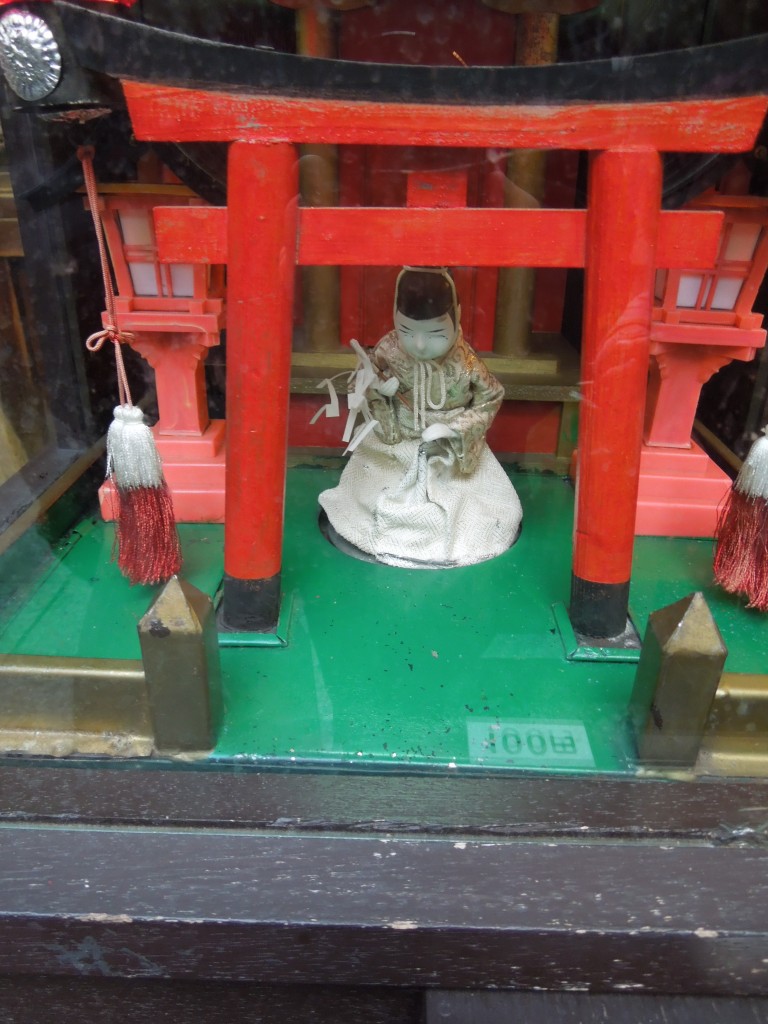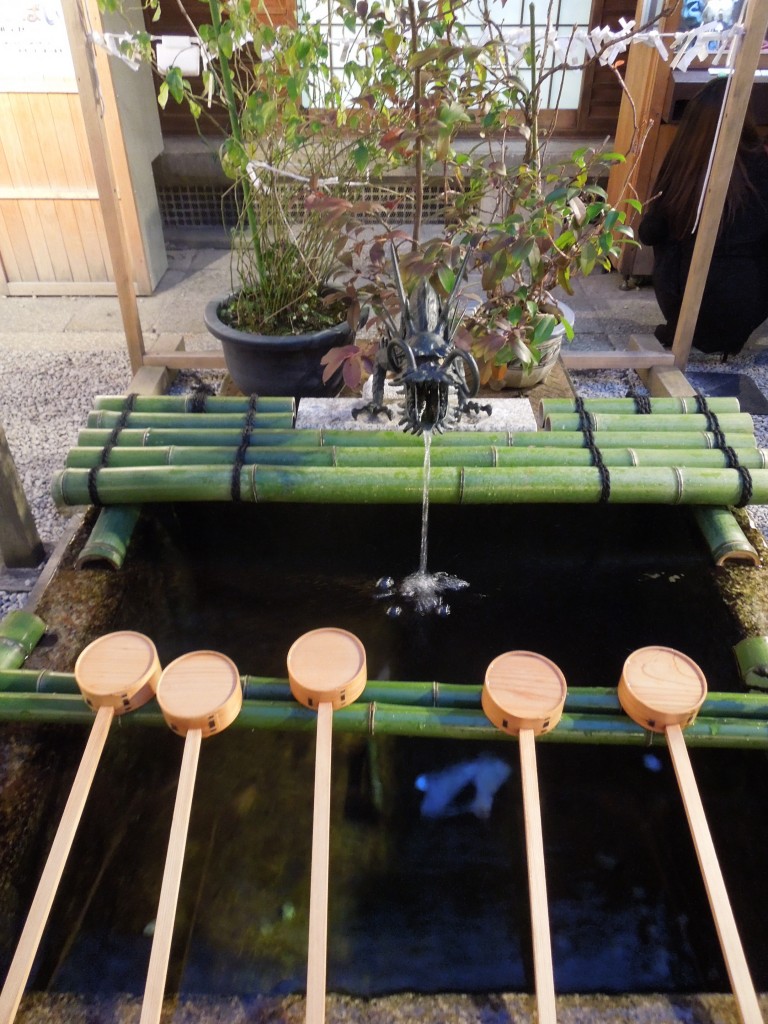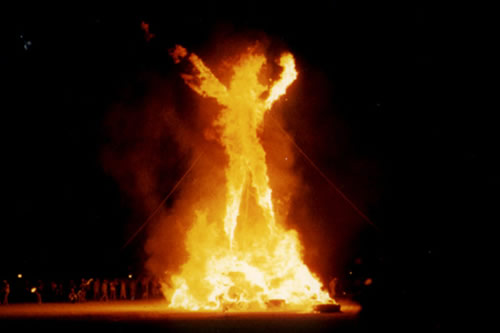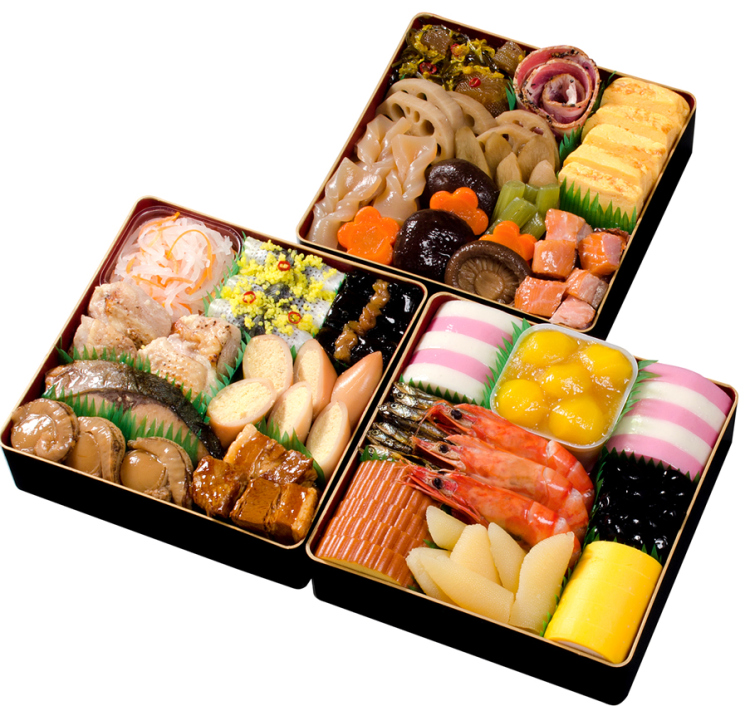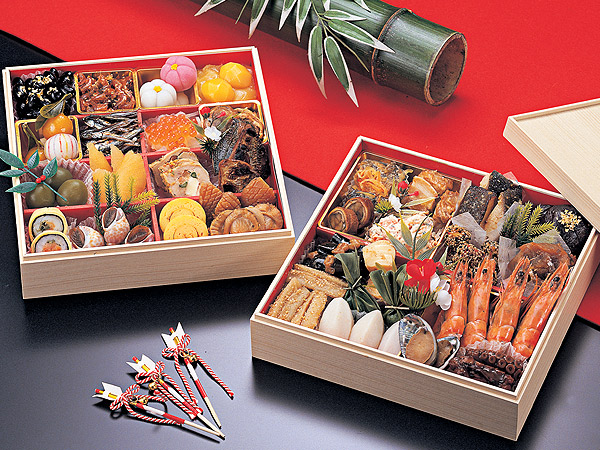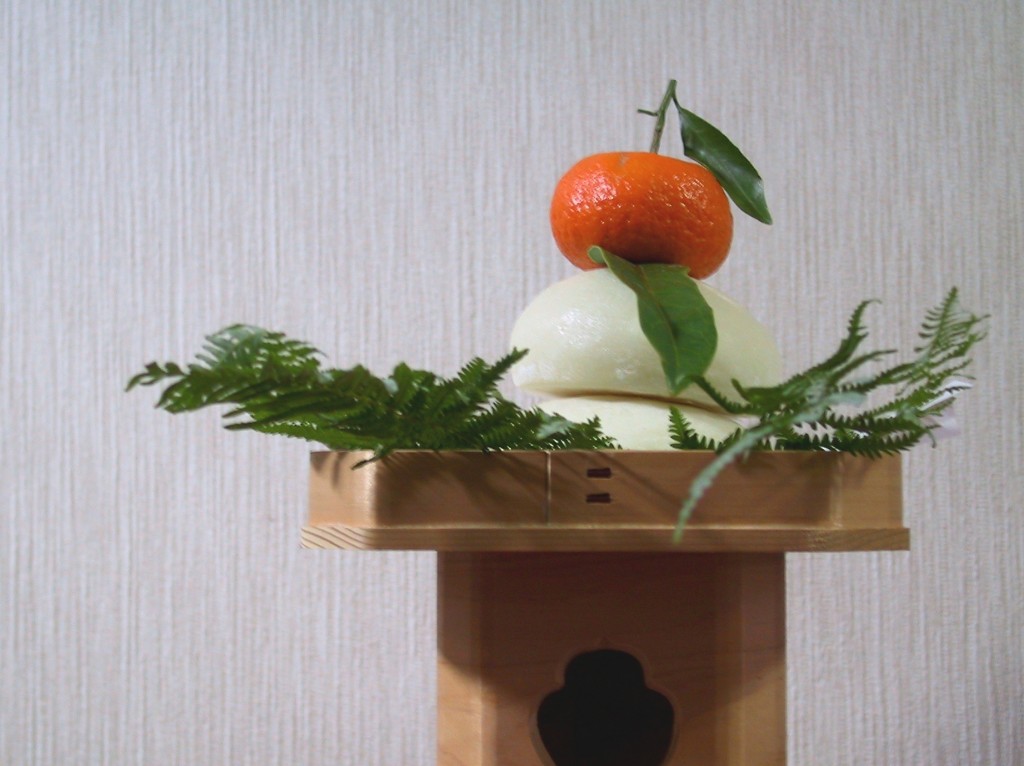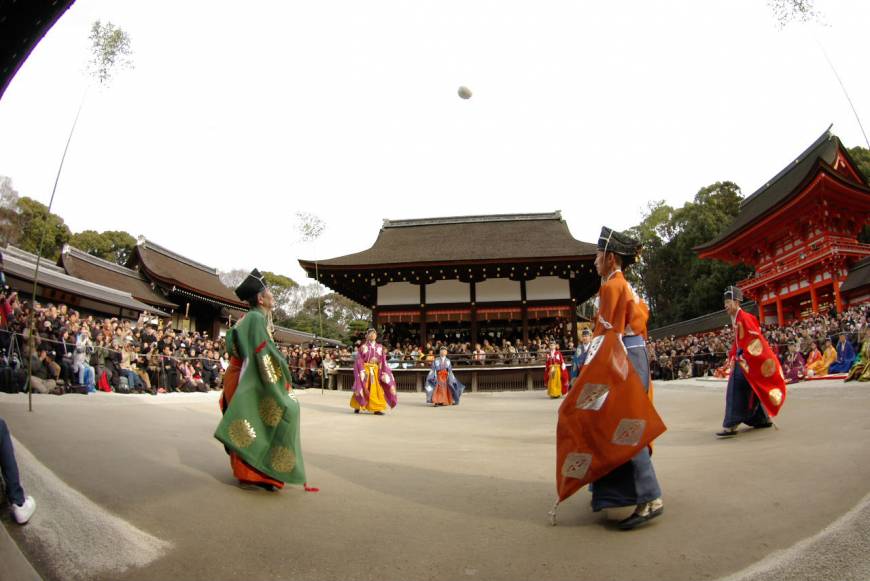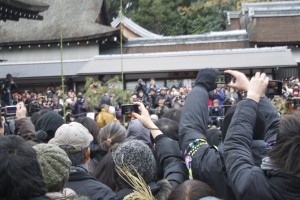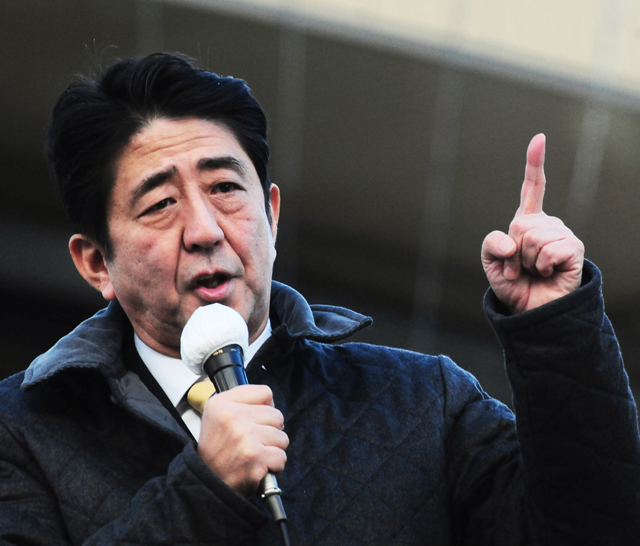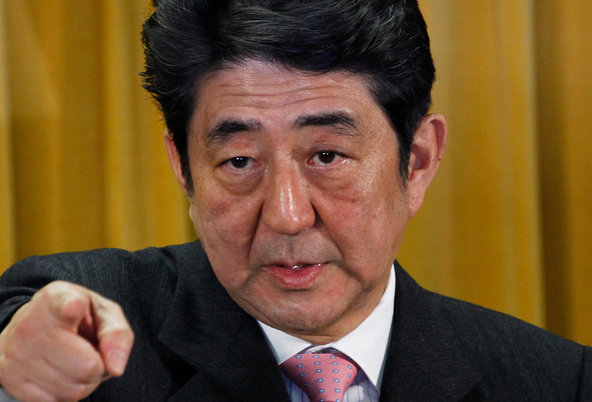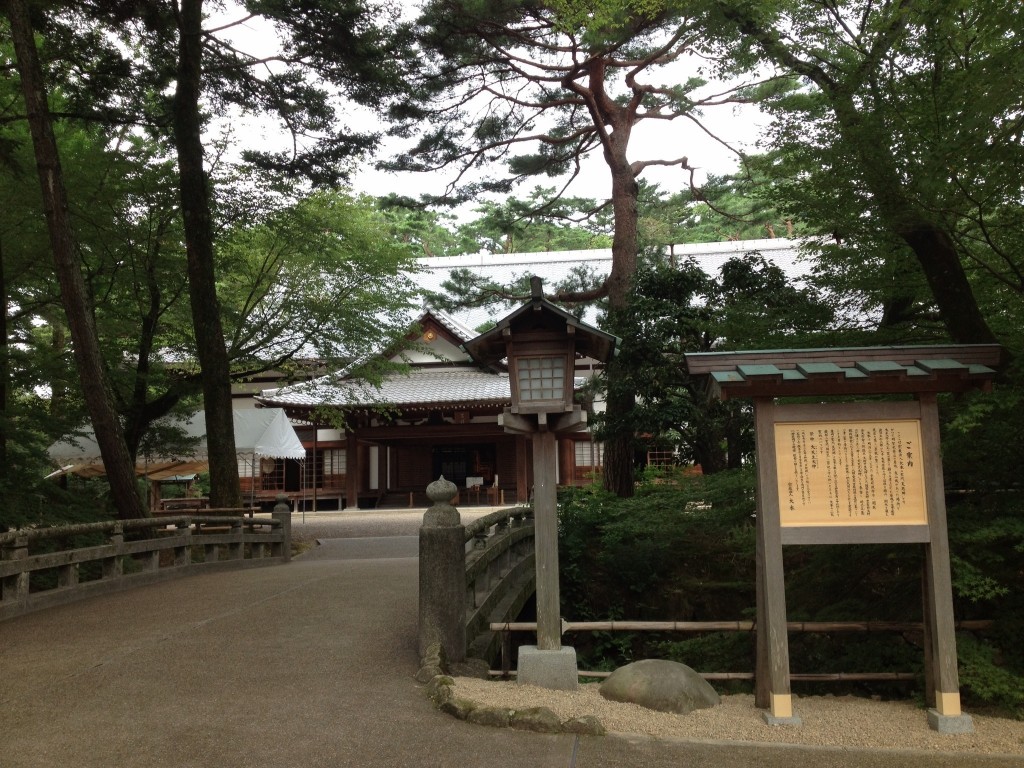
The Bansho-den shrine, built in 1958, where twice-daily services and festivals are held at the Oomoto Headquarters, Kameoka (this photo and others below by Jann Williams)
Oomoto Summer Workshop, August 2013
Report by Dr Jann Williams, Tasmania, Australia
In August 2013 I had the privilege to attend the Oomoto International Summer Workshop in Kameoka, Kyoto Prefecture. Oomoto (also known as Omoto or Omoto Kyo) is a Shinto Sect founded in 1892 during the Meiji era, a time of great change in Japan.
Oomoto is classified as a new religion and was co-founded by Nao Deguchi and her son-in-law Onisaburo Deguchi. They were both shamans and charismatic individuals who have been likened to fire and water, or the warp and weft of weaving – their writings form the basis of the Oomoto doctrines and practices. The sect has a fascinating and turbulent history and in many ways was ahead of its time. Currently there are around 170,000 members, two main shrine complexes (in Kameoka and Ayabe) and numerous branches in Japan. Oomoto has many overseas connections through its inter-religious and humanitarian work. Its biggest branch outside of Japan is in Brazil.
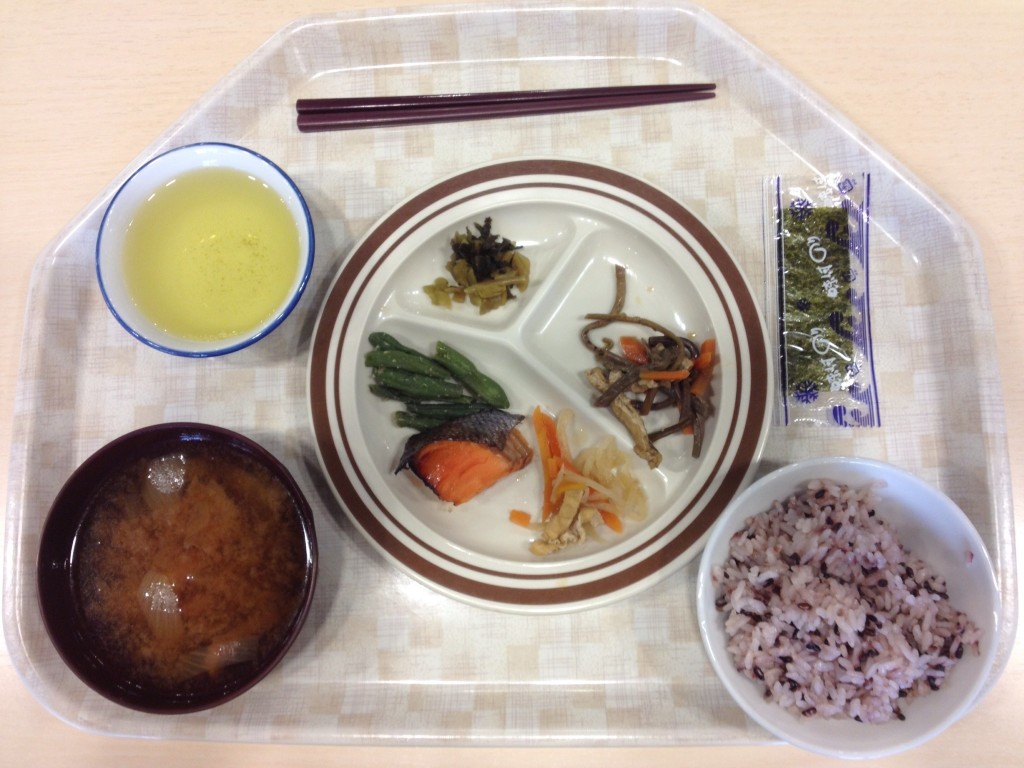
Breakfast of rice, miso soup, fish, pickles, sea vegetable and green tea. Oishii (delicious). Oomoto Headquarters canteen, Kameoka.
What attracted me to the workshop? Oomoto has a strong commitment to the environment, traditional Japanese arts, sustainable agriculture, world peace and inter-religious activities. These themes, and the links to Shinto, resonated with my interests in the environment, the arts, spirituality, and the future of our planet. Another key factor was that the workshop was in English. It was also appealing that the Spiritual Leader at Oomoto is always a woman. Added to this was the rare opportunity to spend a week participating in and learning about some of the spiritual beliefs, rituals and festivals practiced by Oomoto.
When I arrived in Japan, my knowledge of Oomoto (which translates as the “Great Source” or “Great Origin”) was limited to information on their website and the workshop program. In many ways attending the workshop was a leap of faith, one that I’m pleased to have taken. It turned out that I was the only participant – which was a little daunting at first – usually several people attend. Perhaps it was the heat and humidity that deterred more people attending in August. The fact that the workshop was still held speaks volumes about the generosity and commitment of the Oomoto staff.
What a week the workshop turned out to be. Katsuya Kimura from the Oomoto Foundation was my contact and guide for the workshop and was an excellent sensei. The days were long and intense, starting with a morning service at 6 am and ending most days with traditional folk dancing well into the evening. In-between there were lectures on some of the main activities and teachings of Oomoto. Attending the Poem Festival and Summer Grand Festival added substantially to the program. There were also visits to Ayabe (the Spiritual Centre of Oomoto), Ama-no-hashidate (one of Japan’s three most celebrated scenic sites which is close to two islands sacred to Oomoto) and the Silver Temple in Kyoto (a sight-seeing break!).
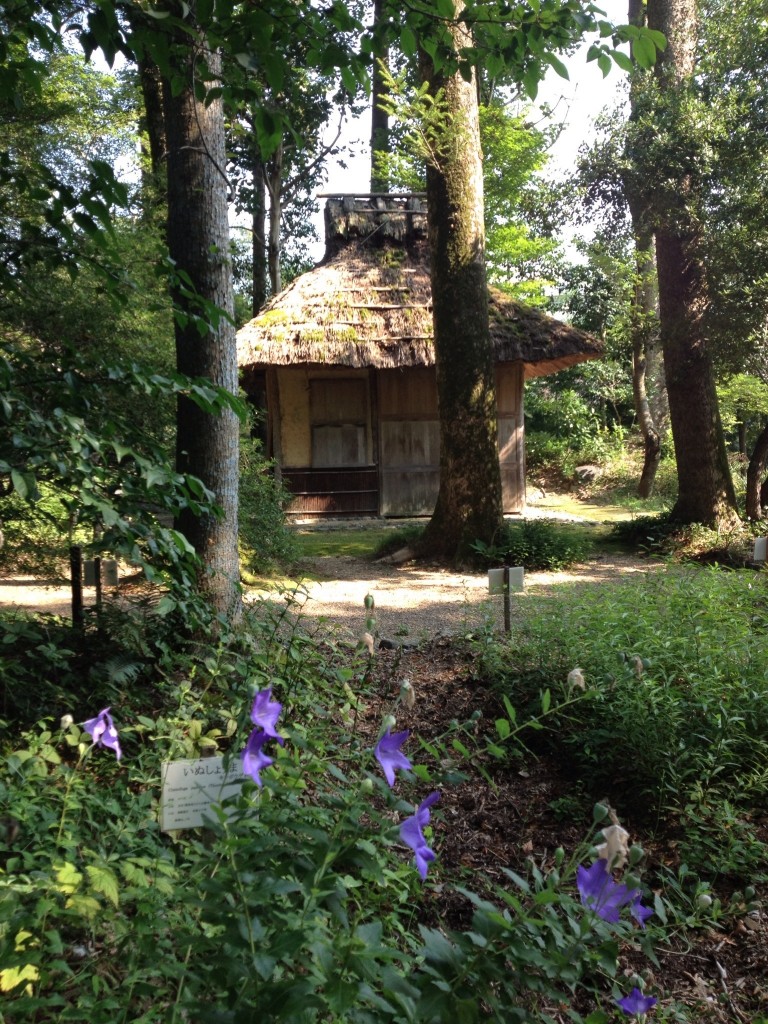
Kameyama Botanical Garden, Oomoto Headquarters, Kameoka. The garden showcases plants collected across Japan. It was designed by the Fourth Spiritual Leader, Madame Kiyoko Deguchi.
The workshop was designed to provide an overview of the teachings and activities of Oomoto. It covered a lot of material. There are two main teachings – firstly that there is one God (the creation spirit) who is infinite and fills the entire universe. The belief that all religions spring from the same source underpins more than 85 years of inter-religious activity at Oomoto. Esperanto was adopted in 1923 with the expectation that it would become a universal language that would break down communication barriers.
The second principal teaching is that unifying the spirits of man and God leads to divine virtue and that together God and man can create heaven on earth. Four principles and four secondary teachings provide more guidance for followers. Participating in traditional Japanese arts is an important aspect of spiritual practice at Oomoto – Onisaburo Deguchi is famously quoted as saying ‘Art is the mother of religion’.
At times I felt like there was information overload at the workshop, there was so much to take in. In contrast, occasionally I felt like more information would be useful – my western and scientifically trained mind raising its head there. ‘Going with the flow’, being present in the moment and the amazement of being part of the workshop quickly over-rode these fleeting concerns. One area I felt the workshop could have expanded on was Oomoto activities in sustainable agriculture and the environment, which were not formally included in the program. The workshop may change to reflect this, as two interviews were arranged to provide feedback to Oomoto.
In addition to learning about Oomoto and the important activities it is engaged in, there were many highlights at the workshop: the beauty and power of the traditional shrines, the rituals performed in them, and their natural settings – chanting with the combined voices at the services were particularly powerful; the pilgrimage to Mt Takakuma; the Botanic Gardens at Kameoka and the 300 year old farm-house at Ayabe; the traditional Japanese meals at the Oomoto canteens and the respect for the food being eaten (I even tried and liked natto, to the surprise of some fellow diners); joining in the traditional folk dancing; meeting the fifth Spiritual Leader, Madame Kurenai Deguchi; and the friendliness, sincerity and generosity of others I met. Special thanks goes to Kimura-san for the time and effort he put into making the workshop a rewarding experience. I can imagine there were moments when my questions and comments mystified him – Australian English, logic and humour can be challenging at times!
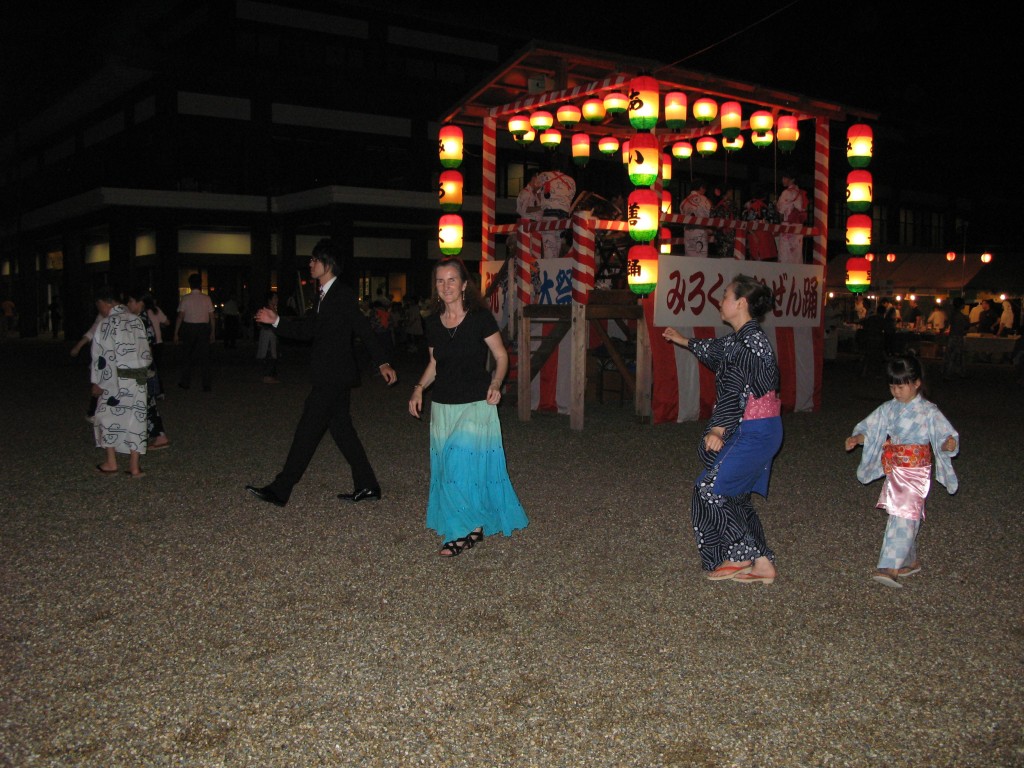
Traditional Japanese folk dancing, Summer Grand Festival, Oomoto Headquarters, Kameoka.
Since returning to Australia I have been reflecting and building on what I learnt and experienced at the Oomoto Summer workshop. There were many leads I wanted to explore. My training as a research scientist has helped (I think!) sort through the myriad and dispersed sources of information available on Oomoto and related topics. An excellent starting point was the book on Oomoto by Bill Roberts and two books on Onisaburo Deguchi by Koyotaro Deguchi and Nancy Stalker. Books by William Gleason and Birgit Staemmler have also been illuminating.
This journey of discovery has taken me into the realms of martial arts with strong links to Oomoto (Aikido and Waraku); Japanese traditional arts (including the current ORIGIN arts program which grew out of the Oomoto Traditional Arts seminar for foreigners held between 1976 – 1997); spiritual beliefs and practices (such as kototama, ichirei shikon, norito, purification rituals and chinkon kishen); and groups in the so-called ‘Oomoto lineage’ such as Sekai Kyusei Kyo and the related Shumei religion. Oomoto has spawned diverse groups over many decades and has been described as one of longest standing and influential new religions.
Much appreciation goes to Green Shinto for posting information about the Oomoto workshop in mid-July 2013 and to my husband for encouraging me to travel to Japan to attend in early August. It has been an enriching experience that continues to grow. I have visited Oomoto once since the workshop and plan to do so again when the opportunity arises. In the interim, Kimura-san continues to be a gracious correspondent.
Four international workshops (in English) along these lines are run by Oomoto each year, one in each season. The next workshop is scheduled between January 29th and February 5th, 2014. It coincides with the Setsubun Grand Festival in Ayabe – which by all accounts is quite special.
***********************************************************************************************************************************************
For those interested in finding out more about the workshops, please contact Katsuya Kimura at k-kimura@oomoto.or.jp. For general information about Oomoto, including a list of FAQ, visit http://www.oomoto.or.jp/English/index-en.html.
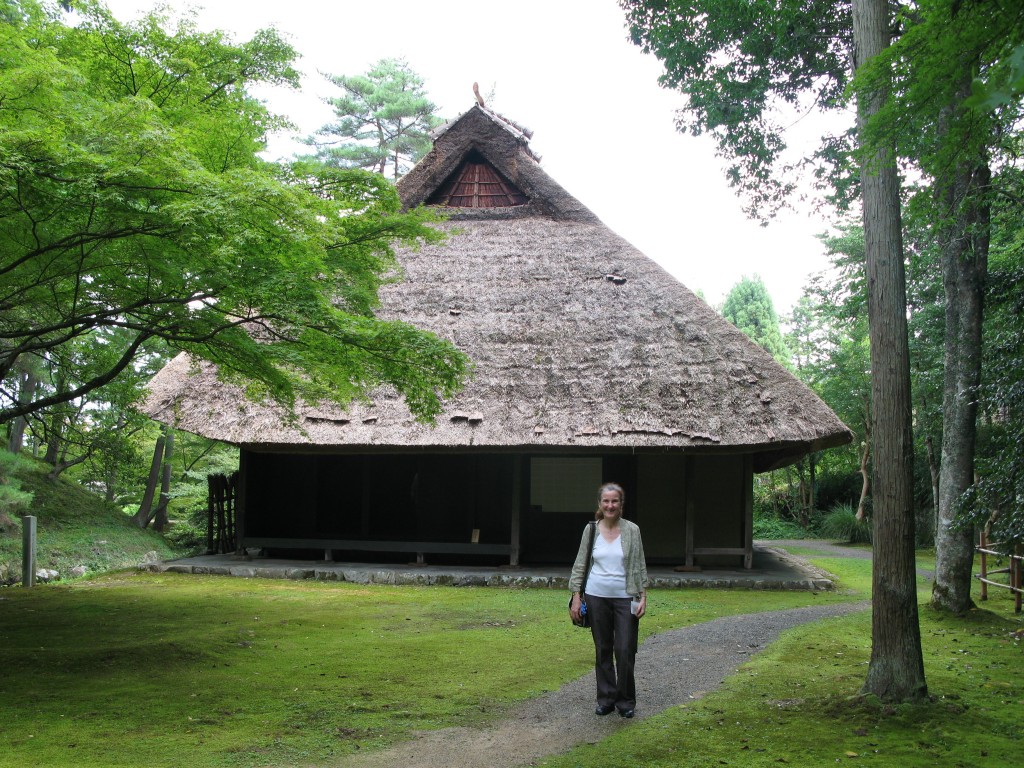
Dr Jann Williams, author of the above report, in front of the 300 year old farm-house at Oomoto Headquarters in Ayabe. It was rescued and moved to its current site by the Third Spiritual Leader, Madame Naohi Deguchi.

